Author, Poet, Podcaster, Stitch Witch, Open-Source Worldbuilder
Last active 60 minutes ago
Don't wanna be here? Send us removal request.
Photo
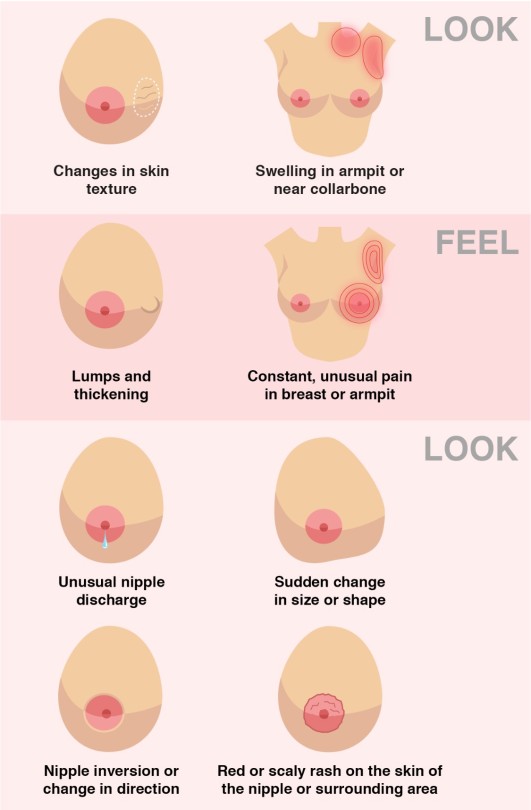
How to spot signs and symptoms of Breast Cancer
410K notes
·
View notes
Photo
Okay, this kinda off-topic, but when everyone was freaking out about a virus (because the people around me did say it would be a virus), my friend thought they meant a human virus, and that over half the population would be wiped out. (We were nine)
I think there's something in here about how quickly misinformation spreads.

422K notes
·
View notes
Text
Can we now map the locations Sybil Ludington stopped at?
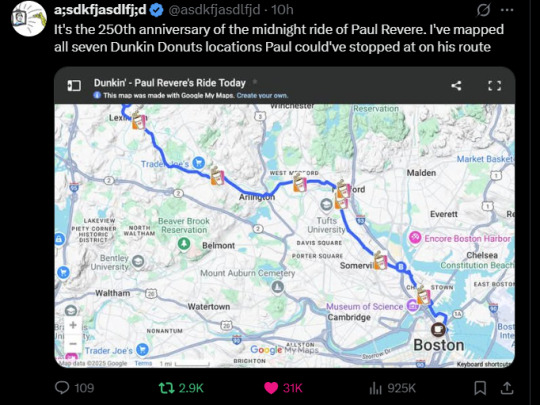
@massachusetts-official
19K notes
·
View notes
Text
I'd never thought of a prosthetic getting lost in the mail before. Now I really want to write this.
Disability Tropes: The Perfect Prosthetic

[ID: A screenshot from the movie Nimona, showing Nimona, a small white girl with red hair, grabbing the right prosthetic arm of Ballister, a knight in black armour with black hair and light brown skin. He is holding a broken bottle in his prosthetic hand while Nimona admires his arm. Overlaid on the screenshot is white text that reads "Disability Tropes: The Perfect Prosthetic" /End ID]
In a lot of media, prosthetic limbs are portrayed as these devices that act as a near-perfect replacement for a character who has lost, or was born without a limb. So much so that in a lot of cases, the use of a prosthetic has basically no impact on the character beyond a superficial level or their appearance, or it's portrayed as something that's even better than the old meat-limb it's replacing. This trope shows up most often in Sci-fi, but it shows up in all kinds of stories outside of that, even otherwise very grounded ones!
If a story isn't depicting the loss of a limb as the be-all-end-all worst thing that can happen to a person, they almost always default to a perfect prosthetic, functionally curing the amputation with it. But the reality is that prosthetics are FAR from perfect, and as someone who has used them for their entire life I don't think they ever will be. Limb difference is still and always will be a disability, regardless of the prosthetics available, and this really isn't a bad thing.
Why is this trope so common?
I meant it when I said this is a really, really a common trope, so much so that the majority of the media I've seen with amputees and characters with limb differences that released in the last decade or end up using it. Even stories where becoming an amputee is treated like a fate worse than death, ironically, aren't excluded from this. I have a few theories as to why this has happened: The pessimistic answer is that it's easy. You get to have a disabled character and claim you have disability representation, without really having to do much extra work or research because most of your audience won't notice if you aren't accurate - in fact they kind of expect it. You also, for the most part, dodge the backlash other kinds of disability representation (or really any minority representation) usually get. The more optimistic reason is that, for a long time, amputees and people with limb differences (as well as a lot of other disabled people) were predominantly shown in media as sad, depressed and unable to do anything, very much falling into the "sad disabled person" trope. As a kid, this was really the only way I saw people like me on screen or in books. And so, the limb difference community pushed back against that portrayal and were pretty successful in changing the narrative in the public's eye. A little too successful. A lot of creatives were genuinely trying to do right by our community, listen and do better, but many simply overcorrected and instead ended up creating stories where prosthetics were essentially cures instead of the mobility aids they are. I also think the public's general lack of understanding about disability plays a roll in all this. There are a lot of people who, in my experience, believe that the more visible a disability is, the worse it is. Limb differences and amputations are very visible, but prosthetics, even those that aren't trying to be discreet, make them less so. While using a prosthetic is very, very different to a biological limb, you won't necessarily see how in a casual interaction with, say a co-worker or neighbor, especially because there is a very real stigma applied to people with limb differences to keep those things hidden from the public. There are other reasons too, such as the fact that a lot of creatives don't even consider the connection to real amputees when creating characters with robotic limbs in genres like sci-fi and some fantasy, so they never stop to consider that these tropes could be impacting real people. Amputees are also very frequently used in "inspiration porn" content that uses the angle that disabilities can be "overcome" with a good attitude, downplaying the way those disabilities actually impact us. The prosthetics industry - specifically the component manufacturers, often also push the idea of prosthetics being the only way to return to a "normal" life, both to the wider public and to people with limb differences and amputations (which can add to that sense of shame I mentioned when it doesn't play out that way for them). On top of that, I also think the recent increase in popularity of concepts like trans-humanism contributes to it as well. these movements often talk about robotic or bionic body parts being enhancements and "the way of the future", and I think people get a bit too caught up on what may be potentially possible in the future with the real, current experiences of people with "robotic limbs" aka prosthetics, now. There are also inherently disabling things that come with removing and replacing parts of your body, things that will not just go away with some fancier tech.
So How do you actually avoid the trope?
So, we have some ideas about why it happens, but how do you actually avoid the "perfect prosthetic" trope from appearing in your work? The most important thing is to remember that this is still a disability. The loss of a limb, even with the best prosthetic technology or magical item in the world, will always have some inherently disabling aspects to it - and this is not a bad thing. The key is to not over-do it, lest you risk falling into the old "sad disabled person" trope. So let's go over some of the ways you can show how your character's disability impacts them. You don't have to use all of these recommendations, just choose the ones that would best fit your character, their circumstances and your setting.
The prosthetic itself is just different
Probably the most important thing to address and acknowledge for prosthetic-using characters, is the actual ways in which the prosthetic itself is different from a biological limb, and the drawbacks and changes that come with that. For the sake of simplicity, I'm mainly going to focus on modern prosthetics here, but it's worth considering how to apply this your own, more advanced/fantastical prosthetics too. One major thing that most people writing amputees fail to acknowledge is that prosthetic limbs are not fleshy-limbs with a different coat of paint. They do the same basic thing their meat-counterparts do, but how they do it is often drastically different, which changes how they are used. A really good example of this is in prosthetic feet. There are dozens of joints in a biological foot, but most prosthetic feet have no joints or moving parts at all. Instead of having dozens of artificial joints to mimic the real bone structure of a foot, which are more prone to failure, require power and make the prosthetic much, much heavier for very little gain, prosthetic feet are often constructed from flexible carbon fiber sheets inside a flexible rubber foot-shaped shell. This allows the bend and flex those bones provide, without all the drawbacks that come from trying to directly mimic it. Making the sheets into different shapes makes them more ideal for different activities. E.g. feet made for general use, like walking around the city, are simple and light, shaped to encourage the most energy-efficient steps, while still allowing their users to do things like wear normal shoes. Feet made for rough terrain often have a split down the middle of the foot to allow the carbon fiber sheets to bend better over rocks when there is no ankle, and some newer designs also include a kind of suspension using pressurized air pulled from the prosthetic socket to allow some additional padding. Running feet have large "blades" made of these carbon fiber sheets to absorb more pressure when the foot hits the ground, and redirect the force that creates to propel their user forward as quickly as possible.

[ID: A photo of 4 prosthetic feet. On the left, the foot is covered with a black shoe, the one to it's right consists of a small, carbon fiber blade, split down the middle, in roughly the same shape and size as the previous foot. Next to the right is an even simpler and smaller carbon fiber foot with no split, and finally is a very short foot that is vaguely rectangular in shape. /End ID]
These are some of my own prosthetic feet I've had over the years. The two on the right are designed to be used by someone who is less mobile, and the ones on the left are made for someone who is more active. As my needs changed over the years, I've used different designs and styles, and keep the old ones since my needs do tend to fluctuate.
There are also robotic feet available that are designed as a kind of "all-purpose" foot that use an electronic ankle which more closely mimics a biological foot, but they are not very popular as the mechanism adds a lot of extra weight and it requires a battery and power to work, with many amputees feeling the jointless carbon fiber feet do a better job at meeting their needs. The same goes for arms and hands. "Robotic" hands that mimic a meat hand exist, but they aren't really that popular, even in places like Australia where the prohibitively expensive price tag isn't as much of an issue due to government programs that pay for the device for you. Instead, most arm amputees who use prosthetics that I know prefer simpler devices that do specific tasks, and just swap between them as needed, rather than something that tries to do it all. A big part of this is because the all-purpose hands can be clunky. they often require manual adjustment using the other hand to do simple things like going from holding a deck of cards to putting them down and picking up a glass of water, for example. The few that don't require that, I've been told, are often temperamental and don't actually work for every person with a limb difference.
Altered Proprioception
Loosing a limb is a big deal and this is always going to have an impact on the body in some way that won't be solved with a fancy piece of tech. One such example is how limb loss effects your sense of proprioception. This is your sense of where your body parts are in space. It's how you (mostly) know where your foot is going to land when you're walking, or how you're able to do things like lift up a glass of water without needing to actually watch your hand do it. Your brain does this by creating a mental map of your body, but this map doesn't get adjusted if you loose a limb. If that map doesn't accurately reflect your real body, you're not going to have an accurate sense of proprioception. This might look like a leg amputee being a bit less stable on their feet, or like an arm amputee needing to look at their arm or hand to be able to grab something with it. Those born without their limbs who take to using prosthetics often have a lot of trouble adapting, as their brains aren't used to having that limb in the first place, whereas an amputee's brain can sometimes be tricked into using their outdated body map to help them adjust to the prosthetic (though its impossible to line it up perfectly). Prosthetics that directly integrate with the nervous system, while rare, do exist, and even this direct connection doesn't completely erase this issue for reasons doctors aren't quite sure about. This is something that does become less of a problem with time. Eventually, someone proficient with their prosthetic will learn to compensate, but their sense of proprioception will never be 100% perfect. At the end of the day, no matter how it attaches, a prosthetic is still not a natural part of the body, and that will always cause some issues. It also means if they aren't practicing it all the time, they may have to relearn how to compensate for it.
Extra weight
You also have to remember that a prosthetic is not a natural part of the body, like we already talked about, and so no matter how good it is, your brain will most likely always interpret the weight of the prosthetic as something attached to you, not part of you. This means that, even though prosthetics are actually a lot lighter than biological limbs, they feel so much heavier. This is because, while a meat limb is heavier, a lot of that weight is from muscles which are actively contributing to the limb working, so it doesn't really feel like its that heavy. When you have less of your meat-limb though, you have even less muscle to work with to move this big thing strapped to it, so it feels heavier. The more of the limb you've lost, or just didn't have, the heavier the prosthetic has to be, and the less muscle you have left to move it. It's for this reason that a lot of amputees and people with limb differences get tired faster when using prosthetics. Some of us are fit enough where you almost wouldn't notice the extra effort they need to put in, but once again, just because you can't see it from the outside, doesn't mean it's not an issue.
Avoiding Water
Most prosthetics also aren't waterproof, and so prosthetic users have to be very careful about when and how they come into contact with it. For amputees with electric components, contact with water at all will likely damage the device. This can even include especially heavy rain, something I was told to avoid when I got my electronic knee prosthetic and something I assume would also apply to arm amputees with complex, electronic hands. For those with non-electronic prosthetics, water can be hazardous for different reasons. If the prosthetic has metal components, water may cause them to rust, especially if it's salty water. Other prosthetics have foam covers to give the illusion of a limb with the general shape of muscles and fat, but these covers do not come off, and if they get wet enough that water seeps all the way through, it is very hard to dry it and they may become moldy. Finally, cheaper modern prosthetics may also float. Many are made of very light-weight materials and some have pockets of air trapped inside them. For leg prosthetics in particular, this means a user might, at best, struggle to swim with them on, but at worst, may get flipped upside down and become trapped underwater - something that happened to me as a very young child. On the flip-side, older prosthetics were usually made of heavy materials like wood or steel, and so had the opposite problem, acting like a weight and pulling a person down if they were to wear them in the water. Water-safe prosthetics do exist, I had a pair of prosthetic legs as a teenager that were hollow, and designed especially for me to swim with fins on when swimming in the ocean, and Nadya Vessey, a double leg amputee in New Zealand even got a mermaid-tail prosthetic made especially for use in the water. Most amputees though just swim without any prosthetics at all, and in 99% of cases, this is the easiest and safest way to go.
Prosthetic-Related Pressure Sores and Pain
Many people with limb differences also experience pressure sores from their prosthetics. Modern prosthetics typically attach to the body using a socket made of carbon fiber or fiberglass, held on either by pressure, using a vacuum seal or through a mechanical locking system built into the socket. No matter the specifics though, the socket has to be very tight in order to stay on, and this means that extended periods of use can lead to rub-spots, blisters and pressure sores. Many socket prosthetics also use silicone liners to add extra padding, but this means wounds caused by the pressure can't breathe, and bacteria in sweat has nowhere to go, meaning if the person doesn't rest when one of these wounds occur, it can very easily and quickly turn into a serious infection. In a properly fitting prosthetic, used by someone who has fully adjusted to them, this doesn't happen often, but it is something most amputees and people with limb differences have to at least be mindful of. Some new prosthetics use a different method of attachment, called Osteointegration - where the prosthetic attaches to a clip, surgically implanted into the person's bones. While Osteointegration avoids many of the issues like pressure sores that come from a socket, they have their own issues: mainly that they are incredibly expensive, and as of right now, have a pretty high failure rate due to the implant getting infected. Because the implants are directly connected to the bone, these infections become very serious very quickly. Many people with Osteointegration limbs have to be on very strong medication to keep these infections at bay, and they are generally considered unsuitable for anyone who is going to regularly come into contact with "unclean" environments.
Maintenance

[ID: A screenshot of Winrey, from Full Metal alchemist Brotherhood, a white woman with blond hair handing out the sides of a green hat. She is measuring a piece of metal from a prosthetic she is making while Ed, the prosthetic's owner, gives her a thumbs up in the background. /End ID]
Finally, prosthetics also require maintenance from a specialist called a prosthetist, and they don't last forever. Some parts, like a foot or hand, can be reused over an over, but the sockets of a prosthetic need to be completely remade any time your body changes shape, including if you gain/loose weight, you start experiencing swelling, or you're just a child who is growing. Children in particular need new prosthetics every few months because they grow so fast, and as such, their prosthetics have to be made with this growth in mind. If they go too long without adjustment or an entirely new prosthetic, it can seriously impact the child and their growth but even small adjustments can be costly, depending on where you live. While prosthetics are built to be sturdy and reliable, they need a lot of work to stay that way. The more complex the prosthetic, the more work is needed. Complicated electronic components may need to have regular maintenance done by your prosthetist or even the specific component's manufacturer, and depending on where you live, this might mean having to send your prosthetic limb away for this to be done. While my prosthetist technically has the skills and knowledge to do the maintenance on my electronic knee, for example, the manufacturer forbids anyone not from their company to provide this service, meaning my leg needs to be shipped off to Germany once every few years if I want to keep the warranty. This has the unfortunate side effect of sometimes your limbs getting lost in postage (shout-out to Australia Post, who lost mine twice), meaning it can be months before you get it back or get a replacement. Usually, you'll be given a replacement in the meantime if you need it, but walking on a leg that isn't yours, even when its correctly fitted, always feels a bit weird (maybe that's just me though).
Not every difference is Inherently Negative
We've talked about some of the negatives that come from having a prosthetic, but not every difference is negative or even really that big of a deal. In fact, often times, it's these little moments in the depiction of a disability that go the furthest and make it feel the most genuine. My amputations effect me from the moment I wake up, to the moment I go to bed, but that doesn't mean every single way it impacts me is always inherently bad or negative. For example, back when I was working a normal job and going to university, I would often come home, throw my legs off at the door with the shoes still attached and get into my wheelchair, the same way you might throw your shoes off after work and replace them with comfy socks and other comfy clothing. This is something I've only ever seen on screen once, with Eda from the Owl House (and she wasn't even an amputee yet, her limbs were just detachable)

[ID: an screenshot of Eda from the owl house, a very pale woman, laying on the couch in a bathrobe, her hair in a towel. She has taken her actual legs off, throwing them to the other side of the seat. /End ID]
After that, my day mostly looked the same as most other people working a 9 to 5, I'd make myself dinner, watch some TV or play some games, maybe do some extra work at my desk or chat with friends. The only difference is that it would all be from a wheelchair, mainly because my prosthetics were heavy and it was just easier to use the chair around the house. The fact my afternoon and evening routine was done from a wheelchair wasn't a bad thing, it was just different. Likewise, I also don't sleep or shower with my prosthetics on, for the same reasons most other people wouldn't take a shower or sleep in thigh-high, steel-capped boots. In your own stories, this might look like giving your characters similar alterations to how they go about their day. Let them take their arm or leg off when they're resting or relaxing, show them taking a few minutes longer to get ready because they have to put it back on, show them doing some things without it. Arm amputees in particular tend to get very good at going about their days without their arm prosthetics, and leg amputees often either learn to get around more relaxed spaces like their homes using a different mobility aids like wheelchairs or crutches, or just through hopping if that's something they're physically able to do. Even when everything is going well and working as intended, your limb-different character won't wear their prosthetic 24/7, no matter how much they love it. There doesn't have to be something wrong with it or painful about it to not want it glued to them at all times, just like you can love a pair of big heavy boots but not want them on when you're trying to sleep. For more action-focused stories, being an amputee, also changes things like how you fight. The specifics will vary from person to person, but for example, when I did Hap Ki Do, a Korean Martial art, my instructor heavily modified when I learned what techniques. Beginner-level kicks and most leg attacks were impractical for me, as the force from the kicking motion would usually cause one of my legs to fly off. I also couldn't jump very well, due to some complications with my original amputation that made my stumps too sensitive to withstand the force of landing again. So I ended up learning a lot more upper-body attacks much earlier than it is typically taught. By the time I got my green belt, I was practicing upper-body techniques usually saved for black belts - including weapons training that I could use my secondary mobility aids for, like crutches and my cane in a bad situation. Many holds that rely on creating tension in your target are also less effective on amputees, because either the anatomy that causes those holds to be painful just simply isn't there, or the body part in question can just be removed to escape. Whether we're talking about the negative things, or just neutral differences that come with using prosthetics, you don't want to go too far with any one example. The key is to strike a balance. Of course, the old writing advice of "show don't tell" also applies here. It's one thing to tell us all of this stuff, but unless we actually see it play out, it won't mean much.
How NOT to avoid the trope
Before we move on, let's focus for a moment on some common things I've seen that you SHOULDN'T do as a way to get away from the trope.
The Enhanced Prosthetic
A lot of sci-fi in particular will take prosthetic limbs, make them function exactly the same as a biological limb, but add something extra to it. This does change the way the prosthetic functions and is used, but it usually still ignores the actual disabling parts of having a prosthetic. A really good example of this can be seen in pretty much any futuristic setting, but personally, I think Fizzeroli, from Helluva Boss is the best one to demonstrate what I mean. Fizz is a quadrilateral, above knee/above elbow amputee with highly advanced prosthetics that function, more or less exactly like the limbs he lost, but with the added benefit of being super-stretchy. Fizz is an acrobat and a clown in service, at least initially, to Mammon, one of the Seven Deadly Sins. These prosthetics help him perform and we even do see how they change little things like how he walks and just goes about his day, but the show still treats them like natural arms and legs, but better.

[ID: A screenshot of Fizzeroli from Helluva Boss, a white-skinned imp with 4 black, prosthetic limbs, dressed in teal a nightgown as he lays in bed, reading from a list /End ID]
We see that he never takes them off, even when sleeping, and when he needs to use them as regular arms and legs, they do everything he needs, perfectly fine - at least when they're working correctly. The only time he ever even takes them off or has any issues with them, is when they break in season 2. The word amputee is never used to describe him, as far as I remember, and the fact he is one never really comes up at all, except for when they break or when the story focuses on how he lost them. Which brings me to my next point.
The Glitchy/Broken Prosthetic
One way I see people try to avoid the perfect prosthetic trope, is to take the prosthetic and break it or otherwise make it unreliable by having it malfunction, but not really changing anything else. This approach is heading in the right direction but still kind of misses the point of the criticism a lot of limb different folks have with the depictions of prosthetics in the media. Yeah, prosthetics do break down and some do require extra maintenance, but if your character's prosthetic is still exactly the same as a biological limb (or even better, in the case of the "enhanced prosthetic") when it's not broken, and the only time their disability is treated like a disability, is when it breaks, you're not really addressing the issue. Real prosthetics, like we discussed, even when functioning at 100%, exactly as the manufacturer intended, don't function the same as a meat-limb. They are fundamentally different, and the glitchy/unreliable prosthetic completely ignores all of that. Once again, Fizz is a really good example of this - the only time his prosthetics are not perfect, is when they break or are malfunctioning (despite the criticism, I do genuinely love Fizz as a character, but he unfortunately does fall into a lot of disability tropes).

[ID: Another screenshot of Fizzeroli, this time in a torn up jester outfit, looking down, panicked, at his prosthetic arms which are fully extended and laying motionless on the ground, with his left arm visibly short-circuiting with electricity around it. /End ID]
Now this isn't to say you can't have your character's prosthetics break down or malfunction at all. just that this shouldn't be the only way you differentiate the prosthetic from a biological limb. You should also be mindful of how or why they're breaking. A typical prosthetic isn't going to break down randomly from normal use unless something is very, very wrong or your character just has a terrible prosthetist (which unfortunately, does happen). You might experience issues if you try to make the prosthetic do something it just wasn't designed to do, or expose it to something it wasn't designed to deal with though (e.g. submerging an electronic prosthetic in water and trying to use it to swim).
Just add Phantom Pain
Another common pitfall I see when people are trying to avoid the perfect prosthetic trope, is to just give the character in question phantom pain - which is a side-effect of amputation where your brain's mental map of the body doesn't acknowledged you lost a limb. Your brain tries to fill in the gaps, since there is no signals coming from that part of the body anymore, and assumes either something must be wrong and so you should be in pain, even when you actually aren't. Alternatively, it can also happen when your brain was so used to feeling pain from that area before, in the case of people who had chronic conditions before they lost their limb, that it just keeps remaking those old signals itself. Like the broken/glitchy prosthetic approach, this also doesn't really address the issue with the perfect prosthetic trope, because it has nothing to do with the prosthetic itself. Phantom pain doesn't come from the prosthetic, nor does it effect how they're used, and so including it doesn't really address the issue of the prosthetic being functionally the same as the original, biological limb. This isn't to say that you shouldn't include phantom limb sensation or pain as something your character experiences, but just keep in mind that, when used on it's own, it doesn't counter the trope. Also, just be sure to do your research, everyone's experience with phantom pain is different and it's not something everyone with a limb difference even experiences.
Why is this trope even a problem?
Alright, so we know what the trope is, we know why it became so prevalent, ways to avoid it and also how not to avoid it. All good information, but why is this trope even bad? Why should you try to avoid it? Outside of just wanting to portray a real disability that effects real people more accurately in your creations, the prevalence of this trope actually contributes to a lot of real-world issues, especially when it's as overused as it currently is. I've talked before about "the jaws effect" - where the depiction of something in the media, especially something that the public is widely uneducated on, influences how people see it in real life. The Jaws effect specifically referred to how the popularity of creature-feature movies featuring sharks, like Jaws, caused the belief that sharks were monstrous killing machines to become much more wide-spread, even going so far as to influence decisions about laws and policy surrounding real-life shark preservation and culling in some parts of the world. But sharks aren't the only thing this has happened to.
Disabled people are so thoroughly misunderstood by wider society, that when tropes like this one become popular, people can and often do start to believe the misinformation they spread - in this case, believing that our prosthetics are a perfect replacement for a biological limb, and that getting a prosthetic means you're not disabled any more. While this can be annoying and cause small scale issues for some of us, like people giving us a hard time for using disability accommodations we very much need, it can also impact us in systemic ways too. If the wrong people believe these tropes, it can and does have a very real impact on the lives of disabled people through things like changes to policies to make it harder for amputees and people with limb differences to access financial assistance for other things outside of our prosthetics we may need assistance with.
Conclusion
Despite the very real harm tropes like this can do when it's overused, I don't think it should go away entirely. Some of my favourite pieces of media even use the perfect prosthetic trope and there are even some kinds of media where I even think it's somewhat unavoidable. Characters with perfect prosthetics in kids media in particular, especially when talking about side characters, can help to correct some of the other stereotypes kids may have seen elsewhere - such as prosthetics being "creepy" or "scary" - in a way that is casual and easy for them to understand. The problem with the trope, in my eyes, is it's excessive overuse. It's the fact that it seems to be the only representation amputees and people with limb differences are getting now. Not every story with a limb-different character can or even should delve into the reality of what using prosthetics is actually like, but we need at least some stories that do, without it being this majorly depressing thing.
4K notes
·
View notes
Text
The kind of impossibly in-depth nonsense I never thought about and now cannot get enough of
Random thought but:
Those wide-brimmed pointy hats that witches and wizards are often depicted wearing are for traveling, right? That's what the brim is for, to protect from the sun and other elements. But the pointy part is probably ceremonial -- historically speaking most conical hats are often worn by priests or nobility to signify rank or role.
But sometimes in fantasy settings, wizard hats don't have the brim. But witches almost never lose the brim.
This indicates to me a shared origin between wizards and witches as traveling practitioners of magic. Which makes sense! If you only get a few magical people in a community, either because magical talent is rare or because it takes a lot of study to pick it up or both, then most magically inclined people would probably be in high demand. Which would mean that there was a lot of call for them to travel around and provide their services to place too poor or remote or unlucky to have their own resident magical practitioner.
But gradually, a divide begins to occur. Formally educated magical users are of course most commonly found in cosmopolitan regions (big cities) and can afford to stay in one place for a lot longer. Perhaps even exclusively, if the community is large enough to support them! So as more great cities establish themselves and also establish things like larger and better-funded academic institutions, a class of non-wandering magic user begins to grow. This group, i.e. wizards, signal their greater access to formal education and to wealthy patrons by dropping the brim from their hats. They keep the conical shape and height, to denote status and rank, but they get all bougie about the brim. Other attempts to flaunt success among wizards emphasize the lack of need to travel for work, such as building magnificent magical towers, positioning themselves in the courts of nobility, or building entire academic institutions dedicated to the study of the arcane arts.
Meanwhile rural communities still require the services of magically inclined people, but can no longer afford to entice wizards away from their status-defining sedentary lifestyle. Thus another class of magic user (witches) begins to define itself by their continued existence and work outside of major population centers. Since witches still travel and live in the countryside, their hats keep the brim, because they still need it to protect them from the elements.
This also explains the gender differential. While magical talent probably doesn't operate on the basis of gender, classism sure does. Girls born into wealthier families are often slated for marriage alliances and encouraged to treat formal education as an opportunity for husband-hunting, rather than actually becoming adept in or engaging with the professional use of magic itself. Which doesn't mean that none of them do it anyway, but there's probably a more marked difference between women who become wizards and men who do. Especially as wizards become more preoccupied with social status, and thus more likely to gate off access to certain levels of education, so that only either the extremely wealthy or the extremely talented can get at them. If a girl's family doesn't want to go to all the trouble of paying for a full education or compelling a skilled teacher to take her on, her options for pursuing it on her own are probably quite limited.
Meanwhile out in the sticks, magic users are such rarities that gatekeeping on the basis of gender is frankly too impractical, especially considering the degree of utility magic has for saving lives and livelihoods. It's just not that feasible to give a shit about the gender of the spellcaster who is saving your entire sheep flock from a bad case of bluetongue, or holding up a barrier that's keeping a recent landslide from burying your house, or getting the ghosts out of a local well that you'd really love to be able to actually use.
So over time witches become associated with women, even though it's more that they've got a 50/50 split whereas wizards heavily favor men. In the way of things, this actually become a self-fulfilling prophecy over time, because men who develop magical aptitude see witchery as "women's work" and are more likely to try and save up and move to the city to learn "real" magic, or else try and differentiate themselves from female witches by creating their own distinctions between what they do and what women spellcasters do, carving out particular areas of focus to be the masculine fields of magic.
This would probably create even more distinct classes of magical users -- the male witches who still do the usual magic work in rural regions but don't like to be called witches, and so do something else to distinguish themselves in an equivalent of stamping a No Girls Allowed sign on their door (warlocks?), who probably still keep the wide brim on their hats but perhaps ditch the pointy part in a middle finger to the elitism of wizards (and also to ensure they're less likely to be mistaken for witches), and the magically talented people who make their way from the country to the nearest cities to try and join the wizard class. Though this group is more likely to struggle due to a lack of social or financial clout, and probably has to depend way more on having enough sheer natural talent to draw the eye of a benefactor (sorcerers?). Most of them would be men too, because of increasing social attitudes that men were just better at this "type" of magic would mean that women would have a harder time getting backing, but there would probably be some who were ambitious enough to nevertheless go for it and then end up in a related-but-still-gendered category of their own (sorceresses?).
Because classism, it seems likely that these underdog country-to-city spellcasters (probably also joining in with impoverished but talented locals to the metropolitan areas too) don't get the pointy hats unless they manage to actually succeed in being absorbed by wizard establishments, but also don't keep the brimmed hats because those are associated with being a bumpkin. They're hat-less, or else wear a completely different style. They probably also get a bit of a shady reputation because there are a lot of predatory institutions that scoop up magically talented individuals who don't know how to navigate the relevant social institutions, and then basically embroil them in debt or whatnot in order to exploit whatever magical talent they have for whatever profits are to be gained.
Of course you probably also have the opposite class of people, i.e. formally trained magic users who decide that trying to rub elbows with kings and rich people is stupid, and take their training to go off and save villages from mudslides and such instead. They're basically witches again but with a fancier pedigree, but of course coming from the outside of it they lack the community knowledge to navigate regions as well and also now there's this split from the Boy Witches Who Won't Be Called Witches, and probably what counts as Girl Magic gets very regional, so what jobs you do or how you go about casting spells has an irregular impact on what the locals will call you if you aren't a woman. If you're a woman you can probably take the witch label without as much issue. But since the fellas started as wizards, then, they more likely still call themselves wizards in the face of all this, but the big city wizards do NOT want to be associated with them (unless they do something really impressive that they can share credit for), so there has to be a new category for them (hedge wizards?) to differentiate from proper wizards. Anyway they wear the big brimmed hats again, because that's just practical. Whether they wear tall ones or not probably varies between individual and regional implications about it.
So. Yeah. Magic user hat politics, with bonus gender nonsense.
309 notes
·
View notes
Text
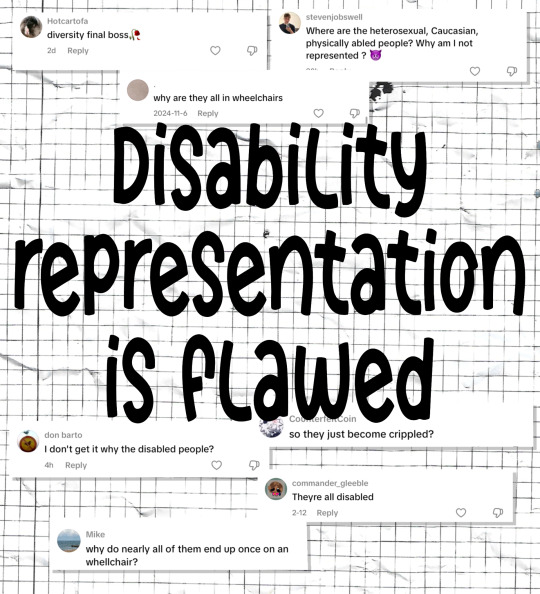
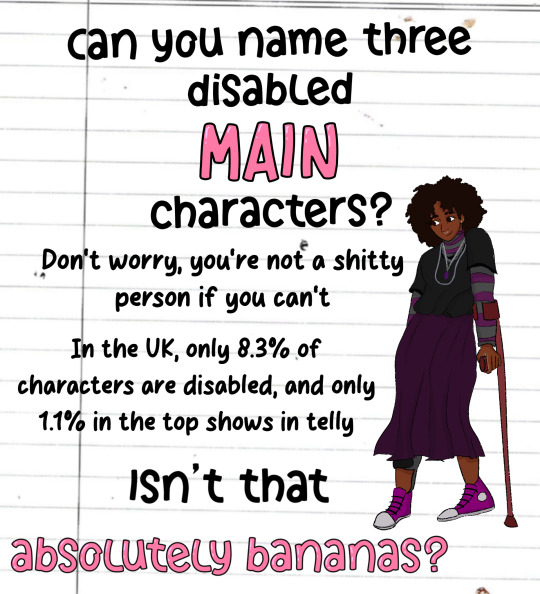

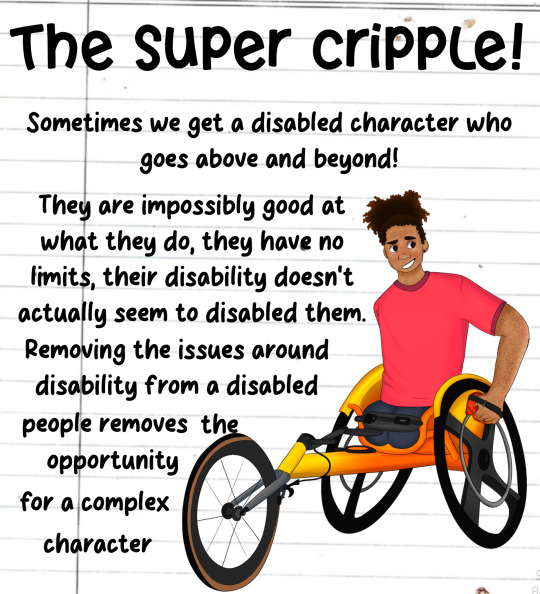



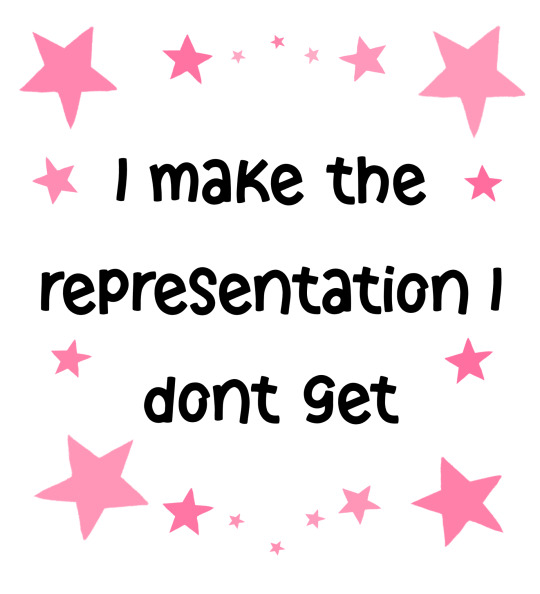

Disability representation!!
I was lazy and used old drawings for this
Anyways much love
4K notes
·
View notes
Note
Is there beef with the Holstein cows and you or what was that joke lol
It's kind of wild It's just never come up on this blog before, but I HATE holsteins. Bottom 10 cow breeds for me. I hate how they're so common they account for the majority of milk produced. I hate that they're the "default" cow to the point where some don't even know cattle HAVE other colors. I hate their tiny horns (IF THEY EVEN HAVE THAT. LOSER ASS HORNLESS COW) and their painfully massive udders.
Legit I'm trying so hard to not launch into a No Mouth Must Scream style AM speech-- shoot my hand slipped.
(AM speech about why i dont like holsteins below the cut)
For starters, I have to give a brief lesson on what these terms mean; the "Holstein" is the American strain of the "Frisian" breed. Frisians are an ancient breed from Frisia, in the north of what we now consider the Netherlands. Crosses between the breeds are "Holstein-Frisians."
(There’s even more to this but im keeping it as simple as possible. Also one of my friends is Frisian and she is probably going to kill me for describing it like that.)
Historically, livestock was adapted to the environment they lived in. Frisians were bred by the Frisii people for hundreds of years in extremely grass-rich, lush, flat environments. The "polders" of the northern parts of the Netherlands. They're huge and eat a LOT of food.
Traditional Frisians were developed to produce as much meat and milk from a single individual as possible, without compromising the health of the cattle with constant inbreeding to get quick gains. We are talking about a breed that is over 2000 years old. They had the perfect environment to make The Ultimate Food Cow and by god they did it. I can respect that.
So, take that, drag it across an ocean to a place that does NOT have polders, and add the rapid enshittification of capitalism to it. BAM you've got a fucking holstein.
There is ONE goal for "improving" the holstein. Make More Milk. As long as the black and white milkbag leaks enough, nothing else matters. Health? Fertility? Feed ratio? Ability to not die of infection? WHO CARES. MILK LINE GO UP.
Over 90% of holsteins are inbred to start with, because Milk Line Go Up. To the tune of having an average COI of 8%-- where extreme negative effects (think Hapsburgs) start to crop up around 10%
Holstein bulls are aggressive bastards (many dairy bulls are), so no one wants to keep intact males in their herds, meaning most cows are artificially inseminated
Not being limited by the natural lifespan of a living bull means that the same stud can keep having direct offspring for decades after his death
Toystory the bull had 500,000 calves before he died, and hit over 1 million offspring in 2015. That's ONE animal and to put this in perspective, there are 9 million holsteins in the US.
DON'T WORRY IT GETS WORSE
Not only can 99% of holsteins be traced back to just two bulls-- 99% of male holsteins share one of two exact Y chromosomes with those two bulls.
The gene pool is so small that it's equivalent to about 60 individuals. Warrior Cat allegiances are larger than that. That's barely bigger than modern ThunderClan.
"Massive lack of genetic diversity" does not begin to capture the existential dread of this situation. Mark my words, WATCH, when the Bird Flu finally mutates a strain that rips through a mammalian population, it's gonna be in the USA and it's going to be through our dairy cattle.
This is not prophecy or me laying a curse on the land, this is the natural consequence of basing the stability of US milk production on the equivalent of 9 million clones of two classrooms worth of individuals, and then packing them in close quarters
And we don't have to wait for doomsday for the impacts to be apparent on the cattle themelves
Holstein fertility has also dropped by half since the 1960s when the intensive inbreeding really kicked into high gear
Because their whole body is dedicating all of their resources to milk production, they have a notoriously "bony" frame.
Show judges, however, like this because they think that's a very "feminine" look for a 1600 pound ruminant. Very normal thing to think.
Like. I don't know if i can communicate this to people who don't look at cows a lot (it's not quite as obviously dramatic as a pug skull) but here is a comparison of an "ideal" show holstein and an "unselected" holstein from a herd that's been established as a sort of "control group" for what they looked like back in the 1960s;


The way that the artery on the "modern" cow's belly runs to the udder like a big pink worm freaks me out the most ngl
The udder also bulges out from between the back legs
The show cow is so thin
And then compare these both to a Holstein-Frisian cross who leans more on the Frisian side;
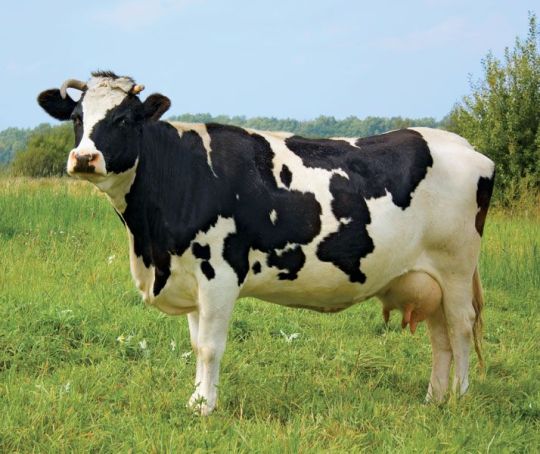
Proper weight, developed legs. Its biggest "problem" is actually just the udder shape-- deep udders, which "hang" low like that, aren't optimal for milk-focused breeds because the higher away from the ground the less chance there is of infection. In that department, the "unselected" holstein clearly outclasses the holstein-frisian.
But it probably won't be surprising to hear that the "show holstein," with its massive, swollen udder, is SUPER prone to infections such as mastitis.
But it is also just more prone to getting sick generally
And, to keep up with these insane demands, holsteins need a TON of food. You aren't going to just turn these things out into a pasture and be done with it. Even its ancestor the Frisian needed premium Dutch polder grass to be such a good cow-- crank that up to 11 with these Monuments to Humanity's Hubrice
The Texas Longhorn developed in semi-feral conditions and can eat a bush to become the best thing in a 10 mile radius. The Scottish Highland was iron-forged in upland moors with a steady diet of turf and rain.
Meanwhile if a Holstein has less than 5 homemade meals a day without poland spring bottled water it will die to death.
And the WORST part? You have to use these if you want to make money in dairy farming. It's WAAY too expensive to just run a suboptimal farm. Their milk isn't great, but they sure do make a lot of it.
...so Holsteins and Holstein-Frisians (and other "super efficient" breeds) have absolutely decimated heritage cattle. The American Milking Devon is a deep reddish brown with gorgeous horns and low maintenance; rare. Randall Linebacks are painted with lines of white speckles down the back and can be used for any purpose; critically endangered. The Niata was a pug-faced cow who could fight jaguars; extinct.
And THAT'S what makes me hate them most of all. I LOVE cows, but whenever I see a reference to one, it's a holstein. It's always boring black and white splotches with big pink udders. They're practically synonymous with "cow" when their homogeniety is actually hiding much cooler breeds from you.
Did you know cows can be tiger-striped?

And that England has its own type of longhorn?

Or that cow horns can twist upwards like an antelope?
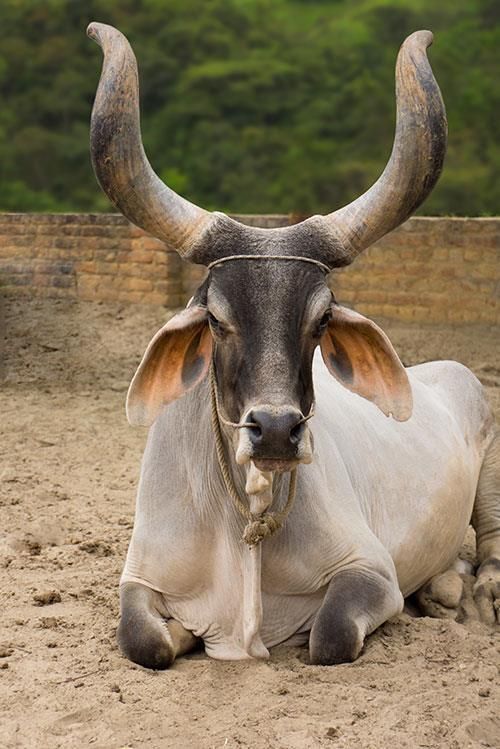
And that they can have REALLY LONG ears?
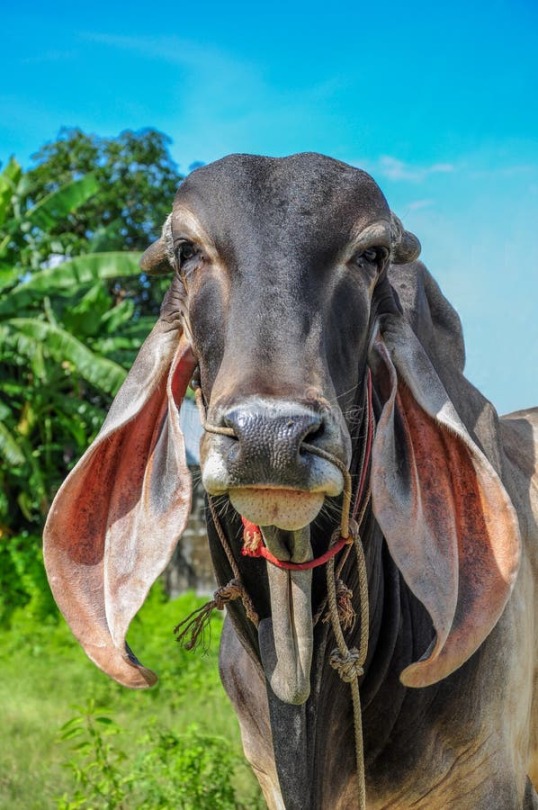
And that they can be blue?

And that's not even getting into some of the cows that have gotten a small crumb of attention lately, such as Highlands, Ankole-Watusi, and Texas Longhorns. There's so many cool cows out there! And they're all really different from holsteins! MOST of them are also a lot healthier and produce tastier milk and meat!
TL;DR yeah i don't like holsteins and I like sniping at them. For reasons both legit and petty.
21K notes
·
View notes
Text

no writing workshop can help you improve your writing as much as this screenshot can
86K notes
·
View notes
Text
Worth
h knew Zoey didn't like him. Nobody liked him. Well, most people didn't like him. But that didn't mean she deserved to be bullied. If there was one thing Hermes couldn't stand, it was a bully. So when the kids in their Study of Magic class picked up her notebook and began to flip through it, he stepped up. Something good had to come from being the scary kid. He even picked up the notebook for her. And she took it an fled.
He didn't tell Aunt natalie when he got home. He knew what she would say. He's just hoped that Zoey would be different--easy to win over. After all, she was friends with Olive Newell, and Olive thought all the stories she'd heard about Hermes were bogus, even the knife, thank the gods.
He wished he could tell Zoey they had more in common than she did with the kids that avoided him, but he knew she wouldn't listen. So he was stunned when she asked him for help.
"I didn't get a good grade on the last test. Miss Chambers said you might be willing to tutor me."
It actually took him a minute to find his voice. "Um... yeah. But..." He watched the weariness on her face as he said it. But he needed this. He couldn't spend every minute in the same classroom for another year. "Can you help me with math?"
She actually blinked. Just blinked. Like she had expected him to ask for a piece of her soul. And she probably had.
"I know you're good at math. Olive told me so." He wasn't going to give her the chance to lie.
"Yeah, I can help you. I just... your math grade was higher than mine last year."
"Only because I stayed after school every day, and our teacher let me re-do all of my assignments."
"Wow." He got the feeling she was imagining staying after school every day and re-doing all the assignments for Miss Chambers' class. But the fact that she asked at least meant she didn't believe the rumors that he'd threated his math teacher.
"Okay," she said, "you help me, I'll help you."
0 notes
Text
Rough
Mat sat at a table in the common, thumbing through the photo album the Truuits had given him. It was late, and he knew he should be in bed, but knowing Reed was there made his dorm room feel stuffy. Besides, this seemed the safest hour to be in the commons. The radio was finally off, and no one was there to turn it on. He was tired ot listening to the news, knowing there was nothing he could do.
"I thought I might find you here." Mat expected to see his siester, but it was Ayan. she wore pajamasand her hair was out of its normal braids, falling in soft waves around her shoulders. She sat across from him. "Rough day, huh?"
"Every day's a rough day."
And suddenly, he was glad it wasn't Key, who might have bristled at his comment and claimed she was only trying to help. Ayan just pointed ot the album. "Can I see?"
He turned it around to show her a photograph of himself and Key at nine year old. He was wearing his ibi'an, and Key held a glowing quartz rose she had craved.
Ayan furrowed her brow. "Is that the rose from..."
"She replaced it," he said before she could finish. "After... after we fled."
They were silent for a while as Ayan turned the pages of the album. She reached the blank section and jumped slightly.
"It's Thisaazhou tradition," Mat explained. "You don't give a completed photo album." Ayan settled back into her chair. "I like that."
"Why?" The tradition hadn't bothered Mat, exactly, though he had thought it strange.
"When Altiane adopted me and my brother, she asked family friends if they had any old photos. Leo used to carry this one around everywhere, and..." she paused, and then she spoke again, as if having a revelation. "...he kept himsefl in the past, pining for something he couldn't have. And I think... I think he might still be there."
0 notes
Text
Echo
She wasn't there, but could I could feel her presence in the canyon, like a distanct echo.
"She was here," I told Atizh.
"How do you know?" Of course, he couldn't see it. And how was I to explain. Laura and I were not twins, but we might as well have been thus were we connected. But I was no wizard. I couldn't tell my guide that I had followed an invisible thread here, that there was a distant echo of her that lingered in the air.
Instead, I dismounted and searched for some remnant of her--something to prove what I already knew, in every fiber of my being, to be true. My sister had been in this canyon. How long, I couln'dt say, and where she had ventured to past that, I didn't know. But I knew she had come here. Even the wind, whisting through the strange formations seemed to call her name.
"The locals believe this place belongs to the goddess of death. They say that if you hear the canyon call your name, you will die." Atizh said this matter-of-factly, as he might state the age of the formations or the kind of stone they were.
"She's not dead," I told him.
"I didn't say she was. But is unlikely we will find evidence of her here, even if she came this way." He looked at the sky, "And whatever the superstition may be, I would rather find myself in a city when night falls.
He was, though I did not want to admit it, correct on both counts. It was almost as if :aura's voice were telling me to be sensible. That a local guide would better find whatever marks she left behind anyway. And Atizh, being Thisaashou had relations with the Atlinthaian people and could probably hire someone easily.
I hung my head and remounted my horse, allowing him to lead me from the canyon and the strongest trace of mys sister I has sensed in days.
0 notes
Text
Vision
At first, she thought Hugh was after the library. It woudln't be the first time some spy had come snooping around. But he didn't. Snoop, that was. She never caught him looking for the names of patrons of her fellow booksmugglers. He seemed to be a legitimate students of magic.
He studied with her for years before she figure it out. He wasn't after her illicit activities. He was after her supernatural ones. She realized it when he asked about Seth.
"Do you really believe in him? That's there's some god directing your actions?"
"I suppose so." Lilith was always guarded about this topic. "I mean, that's the theory."
"Well, have you met him?"
Dammit. Hod did he know? She used the same laugh she did when she had TV appearances. "What makes you think that?"
"Well, you've died, haven't you? I've seen you die. On Death Tag. He doesn't bring you to the Land of the Dead?"
Death witches don't go to the Land of the Dead. They go to a waystation. Until their lives are restored." This, at least, was true.
"Do you think you could get there alive?"
"No," she lied. "Why would you want to, anyway?" How did he know?
"You could say I have... a vision."
She laughed again. "To die young?"
"To come back." He looked her in the eye, and she hoped she gave nothing away. "You did."
From a waystation," she repeated.
"But if you could get there while alive... you'd be the mot powerful death witch ever was."
Or turn into a reaper, she thought. She was lucky to have avoided the fate herself. "Well, if that's what you're looking for, you came to the wrong place. I haven'teven made it out of the first round of Death Tag. You could study with me for a century and never learn how to get there." And now she had to ensure that was exactly what happened.
0 notes
Text
Preen
No one knows where the shades ceom from. No one knows why. Everyone has their theories. But all we know if they're there. They're everywhere, and they're up to no good.
It's why I dress as nice as I do. Why Lance wraps her hair. I'm not really sure how Leigh keeps them at bay, but Leigh is Leigh. She's got enough charisma to make a ghost rethink its priorities about haunting people, let alone to deal with a shade.
What I'm trying to say is, you can fend them off just by looking nice. Or, more accurately, by taking the time to make yourself look put together. Because it's not the look, so much as the routine of it. It's like they don't like when though has been put into something. And if you think enough to put thought into what you wore today, they're more likely to leave you alone.
Even so, they're everywhere, and I mean everywhere. There's more of them than people. I swear you turn one way and there's thousands of them. You turn back, and there's thousands more. Most of them are shadowy, amorphous blobs. Sometimes I wonder how much brights the world would be without them. I guess that's why I sing.
Singing, of course, is another way to keep the shades at bay. This isn't a surprise, seeing as it's following in the footsteps of the First Singer, who sang our world into being. Everyone sings here. They sing their favorite songs from the radio, songs from their childhod, songs their grandparents sand.
I learned to play the accordion when I was young. I play piano too, but that's not as portable. And when Leigh asked me to join the band, I saw it as a way I could make a difference. Besides, who wouldn't want the opporuntity to perform with Miriam Lance?
That's the reason our little five man band is so popular. We've been known to night clear a room of shades together. And when that happens, you can almost see it--you can almost see how much brighter the world would be without them.
I dream of a world without shades. A world where the colors are bright and the music is clear and things don't wear out so fast. But until then, I sing.
2 notes
·
View notes
Text
To the sewing machine!
I went to the county fair and there was a doll sized quilt show happening in the fiber arts hall?!




17K notes
·
View notes
Text
you can make nearly any object into a good insult if you put ‘you absolute’ in front of it
example: you absolute coat hanger
331K notes
·
View notes
Text
Path
A slow smile spread across Robin's face as he activated a stone in the iris fo the balaz board. An electric current shot from it, connecting his other active stones and creating a fence cutting off his his opponant from everything but a narrow path leading directly to the eye. It was kind of a dick movie, but he was tried to taking crap from Keith. Besides, he deserved a comeuppance after how he'd treated Pipsqueak.
Keith frowned at the board. He moved a finger from one stone to the next, probably trying to come up with some way to break the fence. Robin settled into his chair. He had time.
And then it happened. An overwhelming urge to run. As if a dozen people were yelling at him.
He'd heard the voices before, eer since hewas eight, and had nearly died after he and Mabel had eaten some berries they found that turned out to be poisonous. Fortunately, his father had discovered their mistake in time.
Robin had never told anyone about the voices, worried about his parents' reaction. Usually unhelpful and talking over one another, he'd learned instead to ignore them. But now all of them were saying the same thing.
Run. For the love of Kellii, run.
The sound was so loud in his head that he actually fell out of his chair. And just as he did, Keith activated one of his stones on the BAlaz board. But this magic was not intended for play. If it had, it merely would have rendered Robin's pieces inert. Ineast, it shot from the board and hit the chair he's just been sitting it. The wood turned to stone, fell over from the force of the shit, and smashed to pieces.
Robin crabwalked backwards, hoping to avoid a second blast, but he didn't have to. Three officials were upon Keth, escorting him away. Another helped Robin to his feet, but he couldn't hear her over the voices in his head.
All that for nothing.
Yes, I suppose it wasn't so bad.
Survivable, anyhow.
And then they descended into mindless chatter once again.
0 notes
